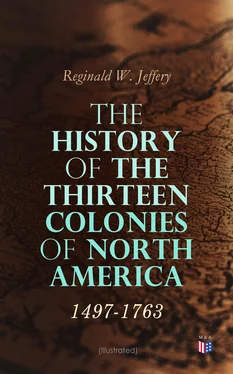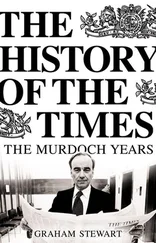The first royal Governor was Francis Nicholson, who had served elsewhere successfully, but was regarded with suspicion and dislike by many of the inhabitants of Maryland. Gerald Slye's accusations against Nicholson, in May 1698, give some idea of this dislike, and are of some interest as an indication of the means used by an ignorant colonist to discredit the Governor in England. A few of the accusations will show how utterly foolish these complaints were. Slye began by asserting that "all thinking men are amazed that such a man should have twisted himself into any post in the government, for besides his incapacity and illiteracy, he is a man who first in New York, then in Virginia, and at last in Maryland, has always professed himself an enemy to the present King and government." The next charge was that the Governor "makes his chaplain walk bareheaded before him from home to church." This is further extended by the fact that he "usually makes his chaplain wait ten or twelve hours for service so that often morning prayer is said in the evening." But there are more charges concerning Nicholson's treatment of his chaplain, for he, "a pious and good gentleman, the credit of the clergy in this province, happening one day by the Governor's means [to be] a little disguised in drink" 74was suddenly summoned to conduct Divine Service. And so charge after charge of the same absurd character were brought against Nicholson not so much because of his ill-doing, but because he had the misfortune to be Governor.
The people of Maryland were not content until in 1715 the fourth Lord Baltimore became a Protestant, and by his conversion it was held that his full rights had revived. Fourteen years later the Proprietor's title obtained an everlasting memorial in the foundation of the city of Baltimore as a port for the planters. The restoration of the Calverts to their former rights was by no means advantageous to the religious life of the colony. The fourth lord was a hanger-on of Frederick, Prince of Wales, while the fifth to hold the title was a notorious profligate. These men insisted on exercising their right of clerical patronage without any regard to the welfare of the Church. Thus George Whitefield, who visited the colony in 1739, failed to arouse religious fervour. His preaching in Maryland was far less successful than it had been in Virginia. The former colony he found in "a dead sleep," and to use his own words, he "spoke home to some ladies concerning the vanity of their false politeness, but, alas! they are wedded to their quadrille and ombre." 75
If the Marylanders were conspicuous for their irreligion, they were equally noticeable for their industry. A large number of German emigrants had come to the colony, and had started a continuous movement of extension towards the West. To these Germans is entirely due the improved state of the country, and the better means of communication even beyond the mountains. But the rolling westward of the Maryland population brought the colony into close touch with the power of France; and like the other colonies it was destined, about the middle of the eighteenth century, to contend against the policy of the French King, by which, if it had been successful, the seaboard colonies would have been deprived of the possibility of further expansion towards the Pacific.
The history of the Carolinas only resembles that of Maryland in the fact that they were both proprietary colonies. The swampy and low-lying coast to the south of Virginia had, in the early years of colonisation, offered little temptation to settlers, and long remained uninhabited by Englishmen or Spaniards. Certainly in 1564, Laudonnière, a Huguenot gentleman and naval officer, attempted a plantation at Port Royal in South Carolina, and named his fortress Caroline, "in honour of our Prince, King Charles"; 76but it was an absolute failure, and the history of the fate of these Huguenots at the hands of the brutal Spaniard, Menendez, is as well-known as the tremendous retribution which followed his barbarous cruelty. Captains Amidas and Barlow, in 1584, at the charge and direction of Sir Walter Raleigh, visited this portion of the North American continent, but nothing came of it, and "Caroline" was left strictly alone as if a curse were upon the land. Adventurers from Virginia at last broke down the old prejudices, and by the year 1625 landseekers and discoverers had penetrated as far south as the Chowan. By a strange chance the country named by Laudonnière was destined in 1629 to receive much the same name from an Englishman for much the same reason. In that year Sir Robert Heath obtained from Charles I. a grant of land to the south of Virginia, which was called after the King "the province of Carolina." No practical result, however, came from this grant, and Carolina, as it may now be called, still remained uninhabited except for the natives.
The first real charter to the Lords Proprietor of Carolina was dated the 24th March 1663, but owing to the previous grant of Charles I. numerous legal steps had to be taken before matters were satisfactorily arranged. The land between Virginia and Florida was now granted to eight patentees, amongst whom were the Duke of Albemarle, the Earl of Clarendon, Sir William Berkeley, but above all the Earl of Shaftesbury. These Proprietors had political and territorial authority, but there was also to be an assembly of freeholders with legislative powers. Twenty thousand acres of land were reserved for the original Proprietors, but at the same time a notice was issued inviting planters to settle in the colony, promising one hundred acres to each settler within five years, together with the privilege of residing in a land blest with the doctrine of freedom of conscience. This notice was published not only in England, but also in Barbadoes, the Bermudas, Virginia and New England, so that the colonisation of the Carolinas was not only, nor even mainly, undertaken by adventurers from the home country. On Albemarle River a settlement was made from Virginia, which formed the nucleus of North Carolina. Near Cape Fear the New Englanders also had a little colony which was absorbed by a more prosperous settlement from Virginia. Settlers soon came from Barbadoes, for there the news had been welcomed, and hundreds of experienced planters showed themselves willing to accept the offer of the Proprietors, and expressed a desire to come with their negroes and servants. They had, no doubt, been tempted by the extra inducements published in August 1663, when the Carolinas were advertised as wonderfully healthy and a land capable of bearing commodities not yet produced in other plantations as wine, oil, currants, raisins, silks, etc. Most of the Barbadoes planters were afterwards absorbed in the colony sent out from England forming the nucleus of South Carolina.
The history of the first year in the Carolinas is practically unknown, except that in September the province was divided into two, and the northern section seems to have been already settled. The growth of the colony must have been steady, for in June 1665, Thomas Woodward, surveyor for the Proprietors in Albemarle county, shows that the population has increased, and that "the bounds of the county of Albemarle, fortie miles square, will not comprehend the inhabitants there already seated." 77He continues to give the Proprietors excellent advice, and recommends that they should show generosity if they wish to encourage settlers; "so if your Lordships please to give large Incouragement for some time till the country be more fully Peopled your Honore may contract for the future upon what condition you please. But for the present, To thenke that any men will remove from Virginia upon harder Conditione then they can live there will prove (I feare) a vaine Imagination, It bein Land only that they come for." 78There were however, others who continued to praise the colony, and one writer in 1670 says of Ashley River, "it is like a bowling alley, full of dainty brooks and rivers of running water; full of large and stately timber." 79The reader can hardly refrain from wondering where the resemblance to a bowling alley is to be found. Again the panegyrist says in a somewhat peculiar sentence, "as of the land of Canaan, it may be said it is a land flowing with milk and honey, and it lies in the same latitude." 80The Proprietors were very anxious to preserve this lovely land for the "better folk," and in December 1671 Lord Ashley wrote to Captain Holstead not to invite the poorer sort to Carolina, "for we find ourselves mightily mistaken in endeavouring to get a great number of poor people there, it being substantial men and their families that must make the plantation which will stock the country with negroes, cattle, and other necessaries, whereas others rely and eat upon us." 81
Читать дальше












